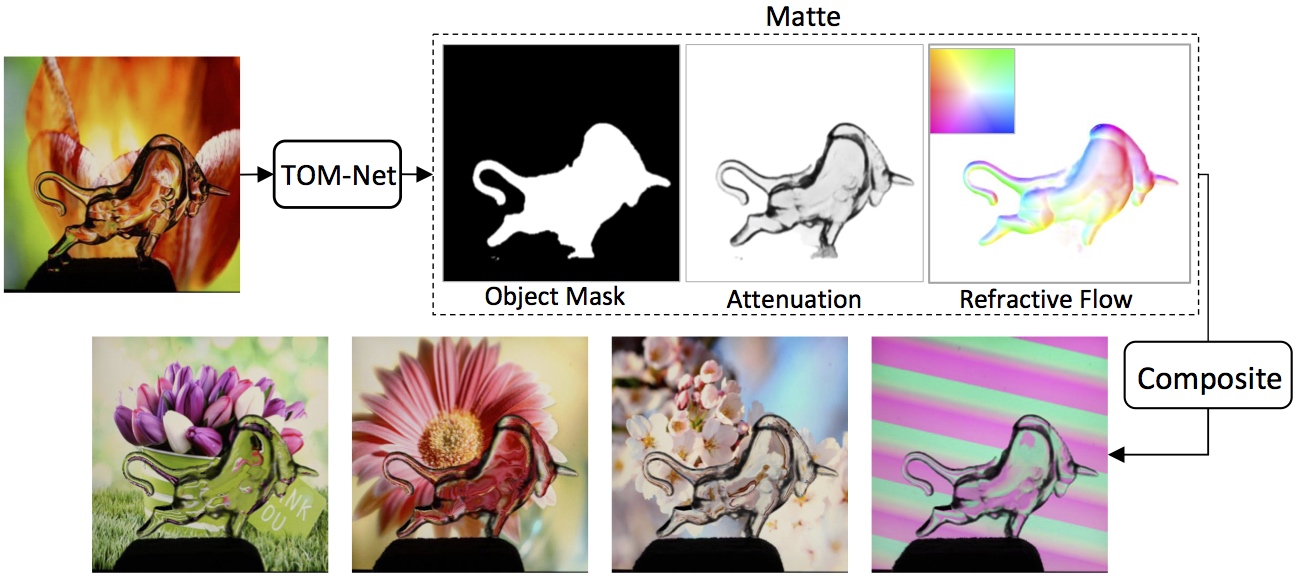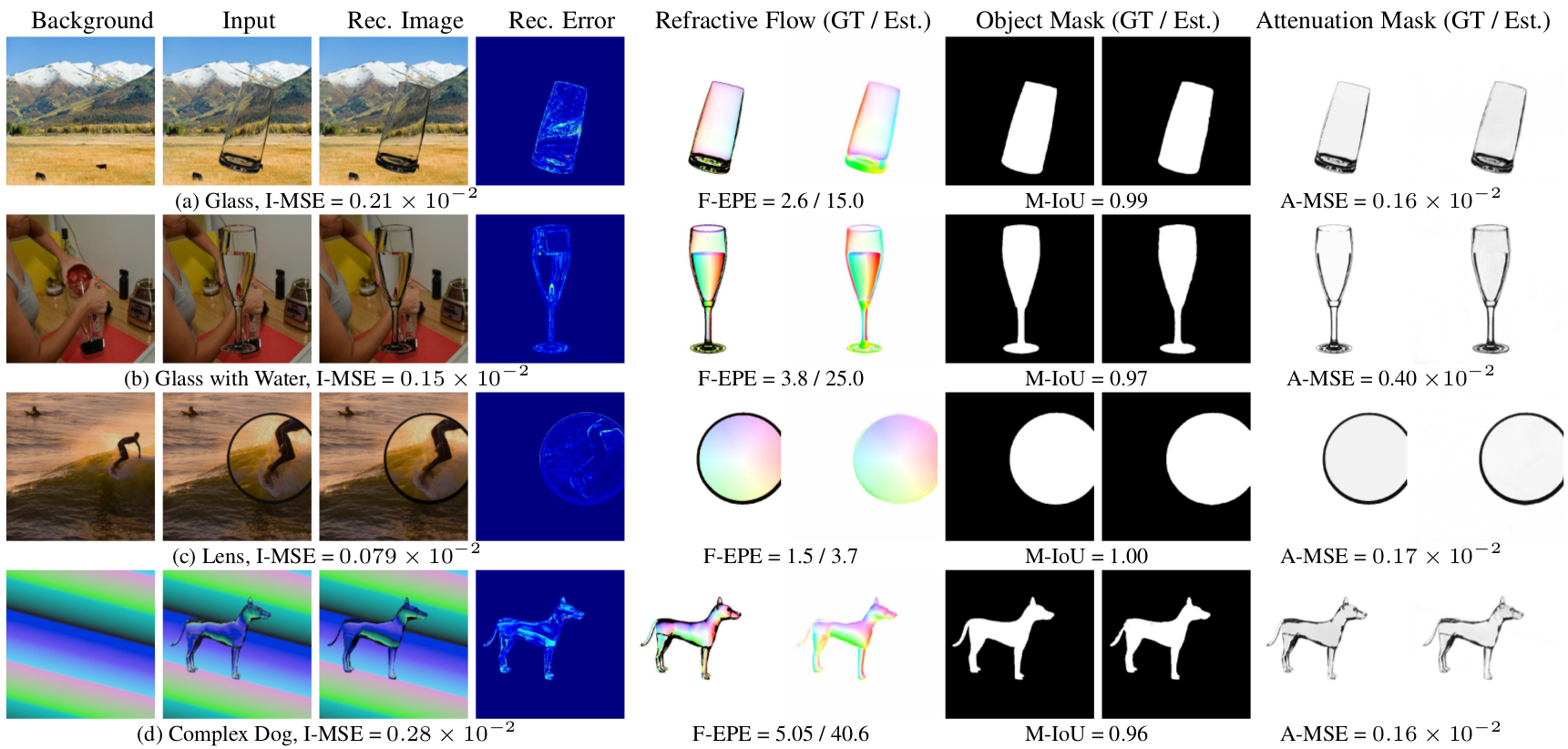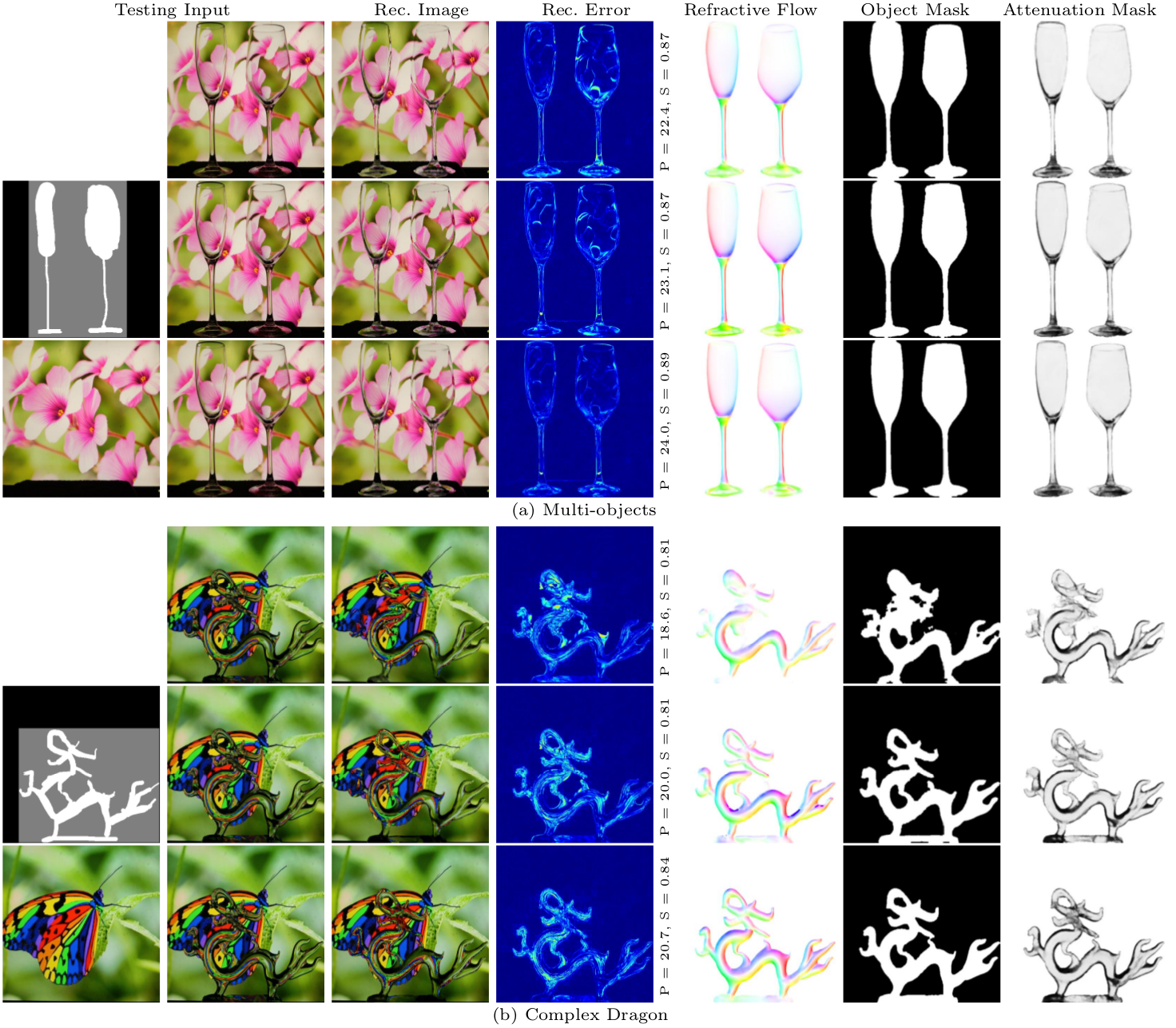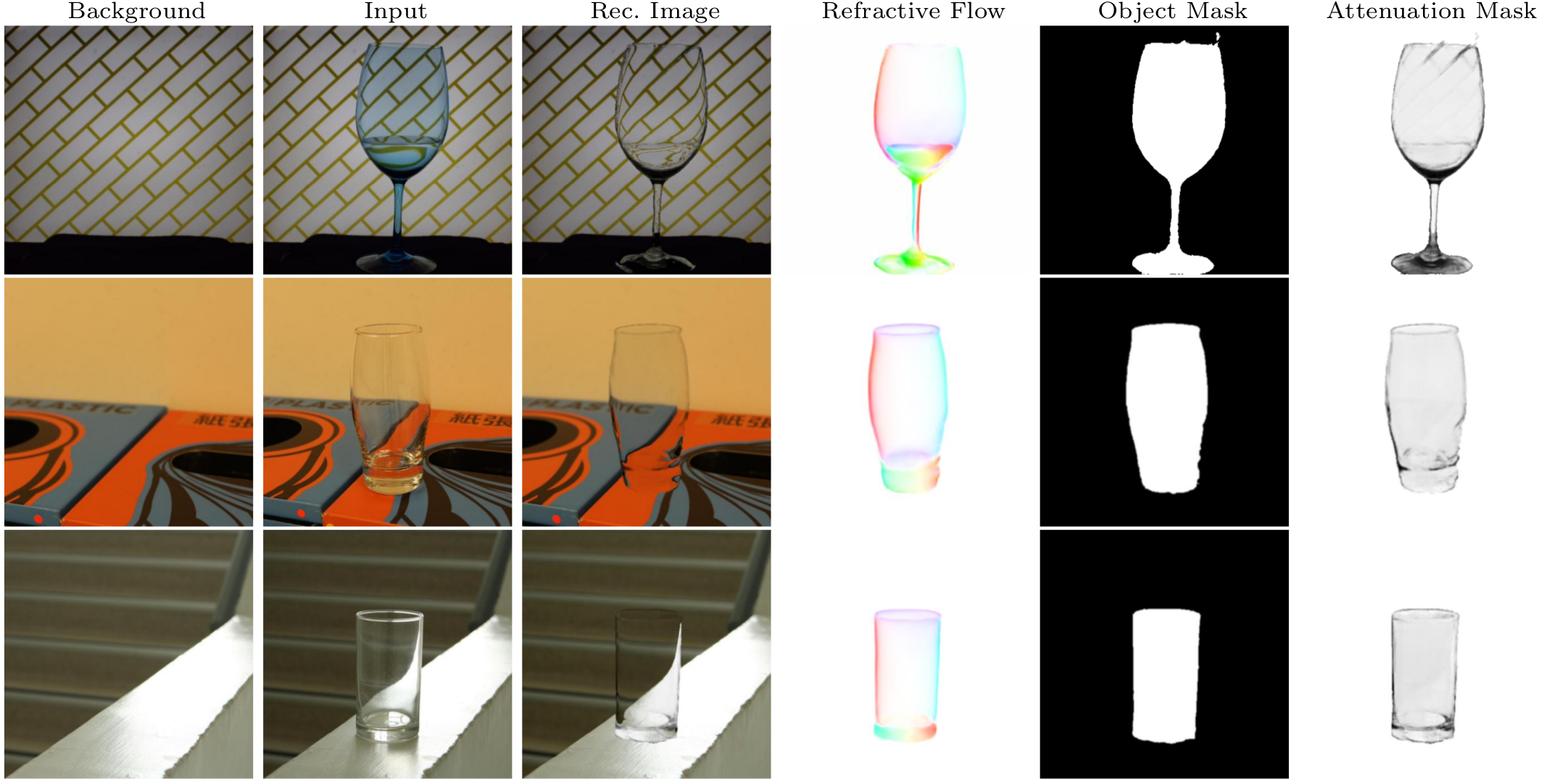Abstract
This paper addresses the problem of transparent object matting. Existing image matting approaches for transparent objects often require tedious capturing procedures and long processing time, which limit their practical use. In this paper, we first formulate transparent object matting as a refractive flow estimation problem. We then propose a deep learning framework, called TOM-Net, for learning the refractive flow. Our framework comprises two parts, namely a multi-scale encoder-decoder network for producing a coarse prediction, and a residual network for refinement. At test time, TOM-Net takes a single image as input, and outputs a matte (consisting of an object mask, an attenuation mask and a refractive flow field) in a fast feed-forward pass. As no off-the-shelf dataset is available for transparent object matting, we create a large-scale synthetic dataset consisting of 158K images of transparent objects rendered in front of images sampled from the Microsoft COCO dataset. We also collect a real dataset consisting of 876 samples using 14 transparent objects and 60 background images. Promising experimental results have been achieved on both synthetic and real data, which clearly demonstrate the effectiveness of our approach.






